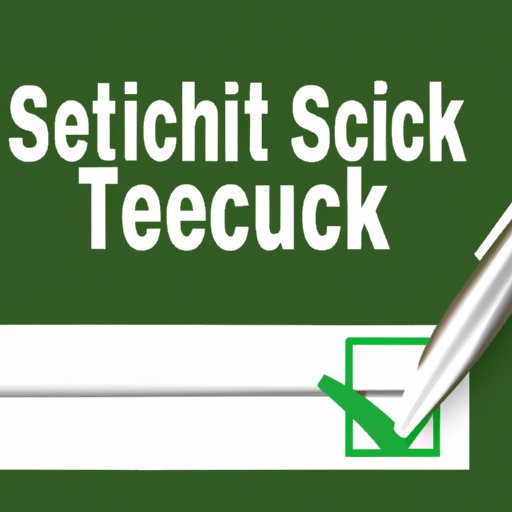I. Introduction
As part of the CARES Act passed by the US Congress in March 2020, millions of Americans were eligible to receive stimulus checks to help alleviate the impact of the COVID-19 pandemic. However, many people faced challenges in accessing their payments, especially those who did not file taxes in recent years. If you are one of the many people struggling to access your stimulus check, don’t worry! In this article, we outline all the possible ways to get your payment without filing taxes.
II. Using the Non-Filer Tool
If you don’t normally file taxes because you have little or no income, the IRS Non-Filers: Enter Payment Info Here tool may be the answer for you. This free online tool allows you to provide your basic personal and banking information that the IRS needs to send your stimulus check.
To use the tool, you need to meet the eligibility criteria, which includes the following:
- You did not file a 2019 federal tax return.
- You didn’t receive a Social Security retirement, disability, or survivor benefit, or Railroad Retirement benefits in 2019.
- You are not required to file a federal income tax return for 2019 or for any reason.
- You have a valid Social Security number or an individual taxpayer identification number (ITIN).
- Your income is below the threshold of $12,400 for an individual or $24,800 for a married couple filing jointly.
If you meet these criteria, you should provide your information on the Non-Filers tool website. The process is quick and easy, and once you submit your information, the IRS will use it to determine your eligibility for a stimulus check. If you qualify, your payment will be made via direct deposit or a mailed check to your home address.
III. Receiving Social Security Benefits
If you are receiving Social Security benefits, you may be eligible for an automatic stimulus check payment. The IRS will use your social security information to determine your eligibility and will automatically send your payment to the bank account where your benefits are normally deposited, or via mail if you don’t have a bank account.
If you receive Social Security retirement, disability, or survivor benefits, or Railroad Retirement benefits, you should receive your automatic payment in the same manner that you receive those benefits. You do not need to take any action to receive your payment, and you may still be eligible even if you didn’t file a tax return for 2018 or 2019.
Please note that if you have dependents who are eligible for stimulus checks, you may need to provide additional information to receive those payments.
IV. Using Tax Prep Services
For low-income individuals and families who need help with their taxes, there are many free tax preparation services available that can help you navigate the process of accessing your stimulus check. The IRS offers a Free File program where you can get free tax prep software and file your federal tax return for free. Additionally, some nonprofit organizations provide assistance with tax preparation for free or at a low cost.
If you use these services to file your tax return, you can qualify for your stimulus check and avoid any future tax-related issues. Using these tools will also ensure that you provide accurate information to the IRS, which can increase your chances of receiving your payment without any problems.
V. Outlining the Role of Banks
Banks can play a critical role in helping people access their stimulus payments via direct deposit. To support this effort, the US Treasury and the IRS partnered with thousands of banks and financial institutions through the Economic Impact Payment (EIP) program. As a result of this partnership, millions of people received their stimulus check payments through direct deposits into their bank accounts.
If you provided the IRS with your bank account and routing information when you filed your tax return or when using the Non-Filer tool, the IRS will use that information to deposit your payment directly into your bank account. If you don’t have a bank account, many banks can help you open one, or you can use check cashing stores to cash your payment once you receive it by mail.
VI. Highlighting the Importance of Advocacy Groups
Several advocacy groups can assist people in accessing their stimulus checks. These groups offer free resources, guidance, and support to those who face barriers to accessing their payments. Some of these groups include the National Women’s Law Center, the Center on Budget and Policy Priorities, and the Legal Aid Society.
If you need help accessing your stimulus check, don’t hesitate to reach out to one of these advocacy groups. They can help you navigate the system and advocate for your rights, ensuring that you receive the payment you deserve.
VII. Conclusion
Getting your stimulus check without filing taxes may seem daunting, but it’s not impossible. By using tools like the Non-Filer tool, receiving Social Security benefits, using tax preparation services, working with banks, and connecting with advocacy groups, you can access your payment quickly and efficiently. Don’t wait to take action if you’re having trouble getting your stimulus check. Reach out for help and see what options are available to you.
(Note: Is this article not meeting your expectations? Do you have knowledge or insights to share? Unlock new opportunities and expand your reach by joining our authors team. Click Registration to join us and share your expertise with our readers.)
